Dip molding is a process in which plastic components, parts, and products are manufactured by dipping a mold into melted plastic, allowing the mold to set, and removing the mold from the hardened plastic. Read More…
No one has more dip molding expertise than we do! We were a pioneer in dip molding 60 years ago, and we remain an industry leader today. Reach out for a fast, competitive quote on custom dip molding & coating services, from prototypes to low or high volume. We’re your single source for design consult, quick prototyping, custom formulations & secondary operations.

Precision Dip Coating provides dip coating services for the manufacture of soft plastic parts such as cap plugs. hand grips, and more. Decorative and protective, our services are very cost effective and we have a proven track record for on time delivery and precise manufacturing. We can match any color you need, and offer services such as assembly, die cutting, packaging, and decorating.
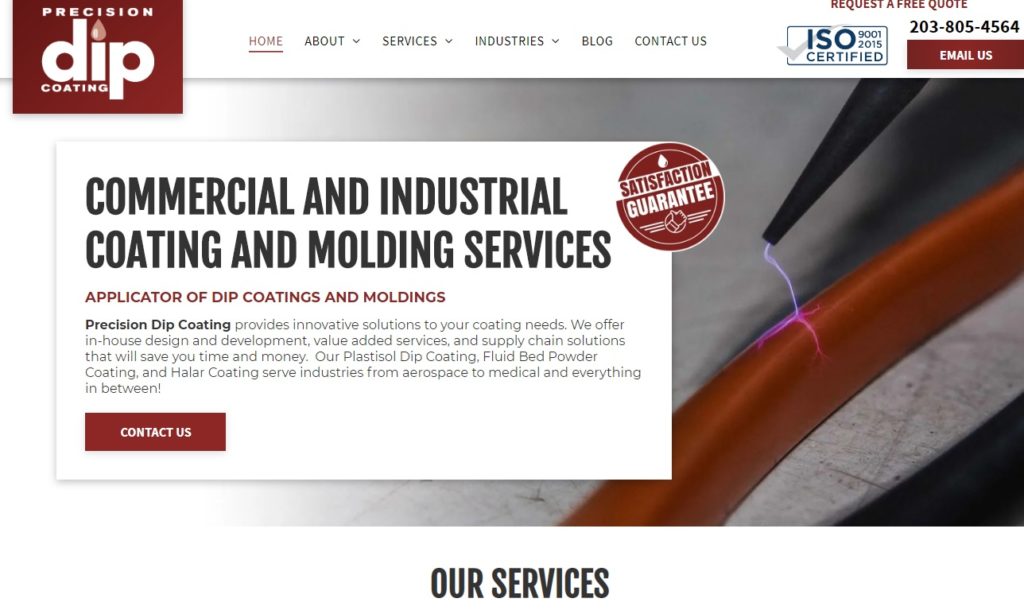
Carlisle Plastics is a dip molding plastics manufacturer offering end caps, plastisol paint masks, thread protectors, tube closures, protective caps and decorative caps.
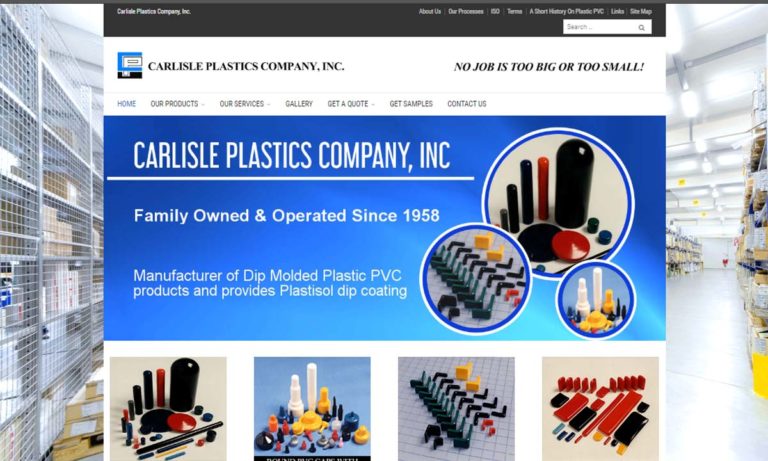
Rubber & Plastics Company has 50 years of experience in manufacturing dip molding with the materials, equipment and flexibility to rapidly prototype. We provide standard and custom designed high-temp paint masks, caps, grips and plugs.
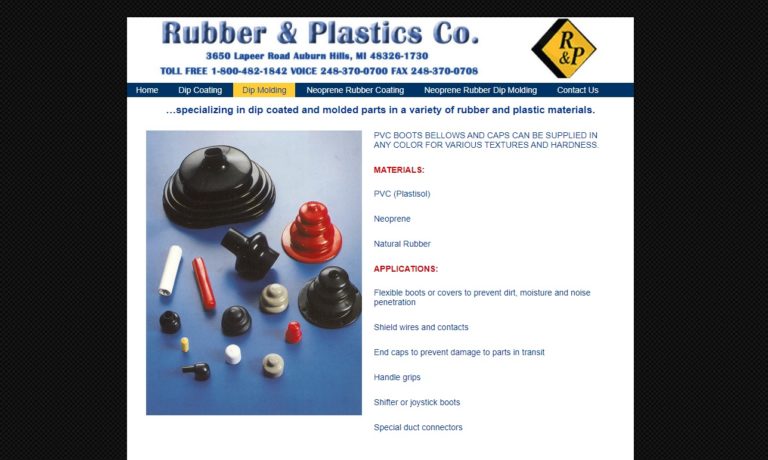
Innovative Coatings is a manufacturer of plastisol dip molding and fluidized bed powder coatings of epoxy, polyolefins, nylon and vinyl. Our dip coatings are of FDA-approved and biomedical grades.
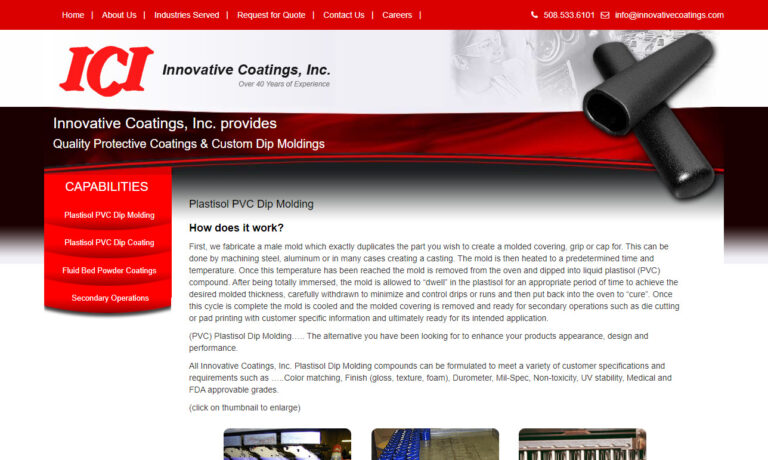
More Dip Molding Companies
Dip molding is a manufacturing technique where plastic parts and products are created by submerging a mold into molten plastic. Once the plastic sets around the mold, it is removed, leaving behind the newly formed plastic component.
Applications
Manufacturers utilize dip molding to create components suited for both protective and decorative purposes. This method appeals to manufacturers due to its flexibility: variations in temperature, dipping speed, duration, and withdrawal rate from the plastisol allow precise control over wall thickness. Additionally, dip molding stands out for its versatility and cost-effectiveness in ensuring products boast both an appealing finish and robust protection against environmental factors.
Dip molding finds widespread application across diverse industries, including healthcare, medical devices, electronics, consumer goods, sports and recreation, food and beverage, sanitation, and retail sectors. It is utilized to manufacture various everyday items such as small plastic products (like plugs and bottle caps), sports equipment, gloves, plastic closures, bags, and handles/grips for appliances.
History
Dip molding has had a historical presence dating back several centuries. Notably, artisans employed a variant of dip molding in the pre-20th century era for crafting hot wax candles. However, the widespread adoption of modern dip molding began in the 1930s, particularly in the UK and USA, catalyzed by the exigencies of World War II. During the war, manufacturers urgently produced plastic polymer components for military needs. The discovery that dip molding expedited the production of items such as tool handles and containers prompted a rapid embrace of the technique.
For much of its history, plastic dip molding relied on either PVC coating or natural latex. However, in 1993, the landscape changed when the FDA highlighted the prevalence of latex allergies among Americans, affecting between 2% and 10% of the population. This revelation prompted significant shifts in the dip molding industry, necessitating the adoption of alternative materials. Among the new materials embraced were polyurethane, nitrile rubber, SBR (styrene butadiene rubber), and neoprene, although PVC dip molding retained its popularity. Furthermore, the FDA’s findings spurred innovations such as the development of latex-free gloves.
Plastic molding and plastic dip molding have surged in popularity today. Researchers continue to pursue diverse and eco-friendly polymer blends to expand dip molding’s applicability. Moreover, efforts are underway to enhance efficiency and reduce costs in this process.
Materials Processed
Dip molding primarily utilizes plastisol, latex, neoprene, urethane, and epoxy as its main materials.
Plastisol
Plastisol, a vinyl (PVC) compound, stands out for its liquid state at room temperature, solidifying permanently upon exposure to heat. Its low-energy manufacturing requirement makes liquid plastisol the optimal material for vinyl dip molding. For outdoor applications vulnerable to the sun’s rays, manufacturers can enhance plastisol dip parts with UV coatings to ensure protection.
Latex
Latex, as a raw material, can be sourced from nature or synthesized. It is recognized for its non-toxicity and affordability. However, since the late 1980s, reports emerged of people developing allergies to its powder, causing a decline in its popularity compared to earlier times.
Neoprene
Neoprene, also known as polychloroprene, stands as a synthetic polymer prized for its flexibility, non-toxicity, ozone resistance, and chemical resilience, making it an effective alternative to latex.
Urethane
Urethane, also known as polyurethane, exhibits durability, stability under light exposure, and remarkable resilience.
Epoxy
Epoxy demonstrates temperature resistance, chemical resistance, robust mechanical strength, heat resistance, and excellent electrical insulation.
Process Details
The dip molding process entails immersing a mold into a liquid substance, followed by curing or solidifying the material to shape the desired product. Here’s an overview of the typical steps involved in the dip molding process:
Mold Preparation
Prepare the mold by selecting materials such as metal, ceramic, or specific types of plastic. Ensure the mold is thoroughly cleaned to eliminate any contaminants or residues that could impact the final product’s quality.
Material Selection
The choice of material for dip molding hinges on the intended properties of the end product. Options range from latex and PVC (polyvinyl chloride) to neoprene and diverse plastic formulations, all typically in liquid form like latex emulsions or plastisols.
Dip Coating
The mold is submerged or dipped into the liquid material. How fast and at what angle it’s submerged can affect how thick and uniform the coating turns out. By withdrawing the mold at a controlled speed, you can achieve an evenly applied coating.
Gelation and Fusion
After the mold is immersed, it is gently lifted out of the material, allowing any extra material to drip away. The coating left on the mold is then either gelled or fused, depending on the material in use.
Gelation
The coated mold, as in the case of latex and similar materials, undergoes heating until the material solidifies or forms a “gel” on the mold’s surface. Heating typically involves hot air or other methods to achieve this.
Fusion
For plastisol and similar materials, achieving gelation alone isn’t enough. Instead, the coated mold undergoes elevated temperatures, ensuring the material fully fuses to form a solid layer.
Multiple Dips and Coatings
Optional: Depending on how thick and what properties are desired in the final product, the mold that’s dipped might go through several rounds of dipping and coating. During each interval, the coating could be heated to enhance adhesion and ensure an even buildup.
Curing (Vulcanization)
Curing is essential for materials such as latex or rubber to attain their ultimate mechanical properties. Typically, the coated mold undergoes heating in an oven or other curing processes to finalize the transformation, enhancing the material’s durability and elasticity.
De-Molding
After the material has finished curing or solidifying, the product can be taken out of the mold. Occasionally, a release agent might be necessary to aid in the easy removal from the mold.
Trimming and Finishing
After removing it from the mold, the product might undergo further trimming or finishing procedures to eliminate any surplus material or imperfections, ensuring that the final product meets the necessary specifications.
Design Considerations
When dip molding and crafting dip molded products, manufacturers must prioritize various factors to ensure process quality, efficiency, and safety. Key among these is meticulous material selection: each material boasts distinct properties and curing needs, necessitating the selection of the ideal material for the intended use. Additionally, manufacturers must intricately design molds, taking into account product complexity and ensuring effective mold release for smooth demolding processes. To achieve uniform coating thickness and prevent issues like air bubbles or drips, it’s crucial to meticulously control the dipping process. This involves managing immersion speed, angle, and withdrawal speed. During gelation or fusion, maintaining precise temperature and curing times is essential for proper solidification or fusion of materials. Implementing rigorous quality control through inspection and testing helps identify defects or inconsistencies in the final product. Manufacturers must also adhere to safety regulations, providing adequate ventilation and personal protective equipment (PPE) for workers involved in handling materials and curing processes. Regular equipment and mold maintenance ensure consistent and reliable production. These measures collectively optimize the dip molding process, enabling the production of high-quality items that meet both specifications and customer expectations.
Machinery Used
Manufacturers may employ various machines in the dip molding process, with several commonly used types outlined as follows.
Preheat Oven
In this oven, manufacturers preheat the mandrel or dipping tool in readiness for the dip molding process. It typically includes a blower that enhances heat transfer and air circulation.
Mandrel
Mandrels, crafted from aluminum, steel, or various metal alloys, serve as molds within dip molding processes to shape the interior of products. Manufacturers can tailor these mandrels by affixing them directly to the arm of a dip molding machine or by integrating multiple mandrels onto a bar within a master rack. After the plastic solidifies around the mandrel, it is carefully extracted to complete the manufacturing process.
Master Rack
A master rack is a sturdy frame made of steel or aluminum. It includes indentations or pins strategically positioned to secure adapter bars, serving as the platform where manufacturers hang or place mandrels. These racks are specifically tailored for use with dip molding machines.
Dip Tank
The dip tank contains the molten polymer used for dipping the mandrels. It’s equipped with agitation to aid the process.
Cure Oven
Cure ovens utilize heaters or high-velocity fans, such as blowers, to swiftly dry and harden dip-molded plastic components.
Overhead Dip Station
Overhead dip stations utilize both vertical and horizontal axes for moving parts, tools, or racks between the machine and dip tanks. They enable manufacturers to simultaneously dip multiple mandrels, facilitating multiple color or grade dips concurrently.
Automatic Rack Transfer System (ARTS) Station
ARTS stations are specialized equipment primarily utilized in conjunction with rotary dip molding machines during rotational molding processes. They optimize operations by facilitating the seamless loading, unloading, and reloading of mandrels without necessitating rack removal. Additionally, they enhance operational efficiency by creating additional room for the cooling and priming of metal components.
Variations and Similar Processes
Dip Coating
Another method employed in manufacturing the aforementioned plastic items is dip coating. This process entails partially or completely covering products with a protective substance. Similar to dip molding, dip coating involves immersing molds into molten plastic material, typically using a plastisol coating.
Dip molding shapes a product within a mold, while dip coating applies a protective layer onto an existing item. Items like wire racks and plastic-coated fences receive full coverage, whereas tool handles, grips, and electrical connectors are partially coated. This method serves both protective and aesthetic functions: enhancing comfort and grip with certain plastic coatings, and adding decorative flair to products through others.
Depending on the method used, plastic coatings can be produced in various colors, textures, and hardness levels. Beyond enhancing the product’s aesthetic appeal, dip coating offers insulation and protection benefits. For instance, it provides electrical insulation for items like wires, jumper cables, and extension cords. Moreover, plastic coatings extend the lifespan of fences and wires by shielding them from corrosion. Additionally, they contribute to noise reduction, dampen vibrations, and eliminate sharp edges on metal parts, thus obviating the need for deburring.
Injection Molding
In plastic injection molding, manufacturers employ a mold and molten polymer mixture to fabricate products. They push the liquid plastic into a mold cavity using a screw plunger or ram. Within the cavity, the plastic spreads to conform to all contours before cooling and solidifying. Injection molding may also include additional clamping for compression, termed injection compression molding. This method is favored for its efficiency, cost-effectiveness, minimal waste, and production of durable mold products.
Blow Molding
Blow molding is a technique primarily used for crafting hollow plastic items, notably plastic bottles. In this process, manufacturers first shape molten plastic into a tube-like form known as a parison, featuring an opening at one end. Next, they secure the parison within a mold and introduce compressed air through the opening. This air pressure causes the plastic to expand until it conforms to the inner contours of the mold. Once cooled and solidified, the plastic is ready for ejection from the mold, yielding the final product. Blow molding is prized for its efficiency, characterized by economical tooling expenses and rapid production speeds.
Benefits
Dip molding stands out as a flexible manufacturing method with many advantages, catering to diverse applications. Its key strength lies in cost-effectiveness, particularly for smaller production batches. Unlike the intricate setups demanded by injection molding or blow molding, dip molding relies on simpler and more economical equipment. This affordability makes it a preferred choice for enterprises aiming to manufacture tailored or limited-quantity items without substantial initial investments.
Dip molding offers a notable advantage in its capacity to craft smooth and flexible designs effortlessly. By adhering closely to the mold surface during dipping, the material achieves a seamless and uniform coating. This feature is particularly advantageous for items such as gloves and handle coatings, where comfort, durability, and a flawless surface finish are paramount considerations.
Dip molding also stands out for its ability to craft intricate shapes while maintaining uniform wall thickness. The material closely adheres to the mold surface, faithfully reproducing intricate details. This precision enables manufacturers to produce highly complex and precise products, ideal for custom grips, caps, and other intricate molded components.
Furthermore, dip molding accommodates a diverse array of materials like latex, rubber, plastics, and PVC. Each material boasts distinct characteristics such as elasticity, chemical resistance, and thermal durability. This assortment empowers manufacturers to choose the optimal material tailored to their application, thereby guaranteeing that the end product meets precise performance criteria.
Dip molding presents distinct advantages over injection molding. It proves cost-effective, especially for smaller production batches. Modifying product design or dimensions in dip molding is simpler and demands less tooling adjustment than the extensive and costly mold changes required in injection molding. Moreover, dip molding enables the creation of products with intricate and complex designs that might pose challenges in injection molding processes.
Likewise, dip molding surpasses blow molding in several respects. Unlike blow molding, which often results in visible seams at mold joints, dip molding achieves seamless construction. It excels for smaller production runs and prototypes, while blow molding proves more cost-effective for large-scale production due to mold tooling expenses. Moreover, dip molding accommodates intricate shapes and a wider array of materials, enhancing its versatility across diverse applications.
Dip molding presents an economical, adaptable, and versatile manufacturing method ideal for crafting seamless, intricate, and intricate products. Its capability to utilize diverse materials and fashion bespoke designs renders it well-suited for a multitude of industries, spanning from medical and industrial sectors to consumer goods and beyond.
Things to Consider
Plastic dip molding is widely sought-after in the molding industry, leading to a multitude of companies competing for your patronage. While this competition often drives competitive pricing, it can also overwhelm you with numerous options. Within this array, discerning between reliable manufacturers and lesser-quality ones can be challenging.
To assist you, we’ve compiled a selection of top-tier dip molding service providers you can rely on. Take your time exploring their profiles while considering your specific needs. Select three or four plastic product companies from our curated list that interest you. Reach out to each to discuss your project, ensuring to cover budget, timeline, quality standards, and delivery preferences. After gathering their feedback, compare and evaluate their proposals. Choose the provider you believe offers the best service and products tailored to your requirements.
Check out our Injection Molded Plastics website

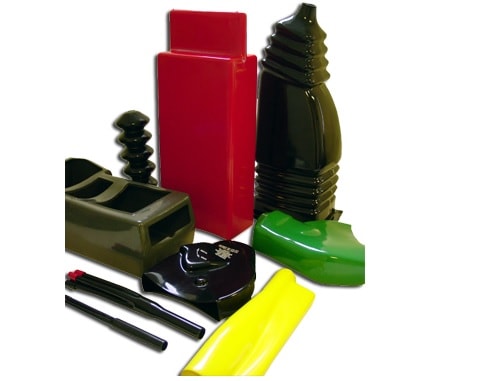
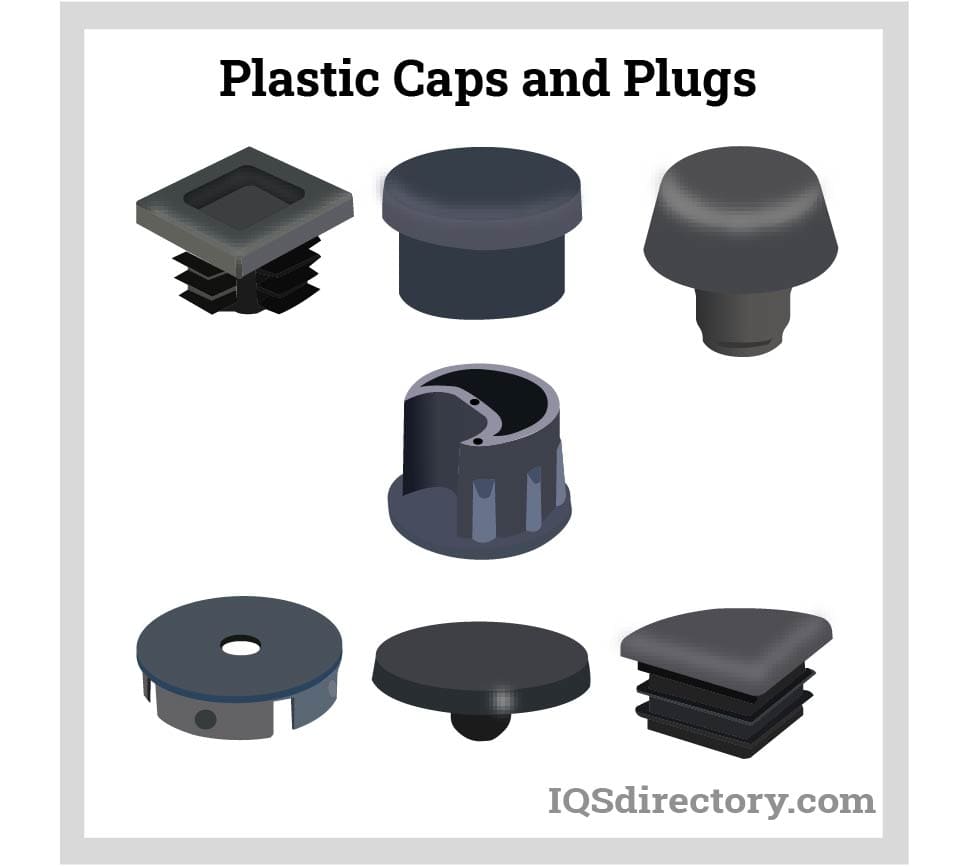
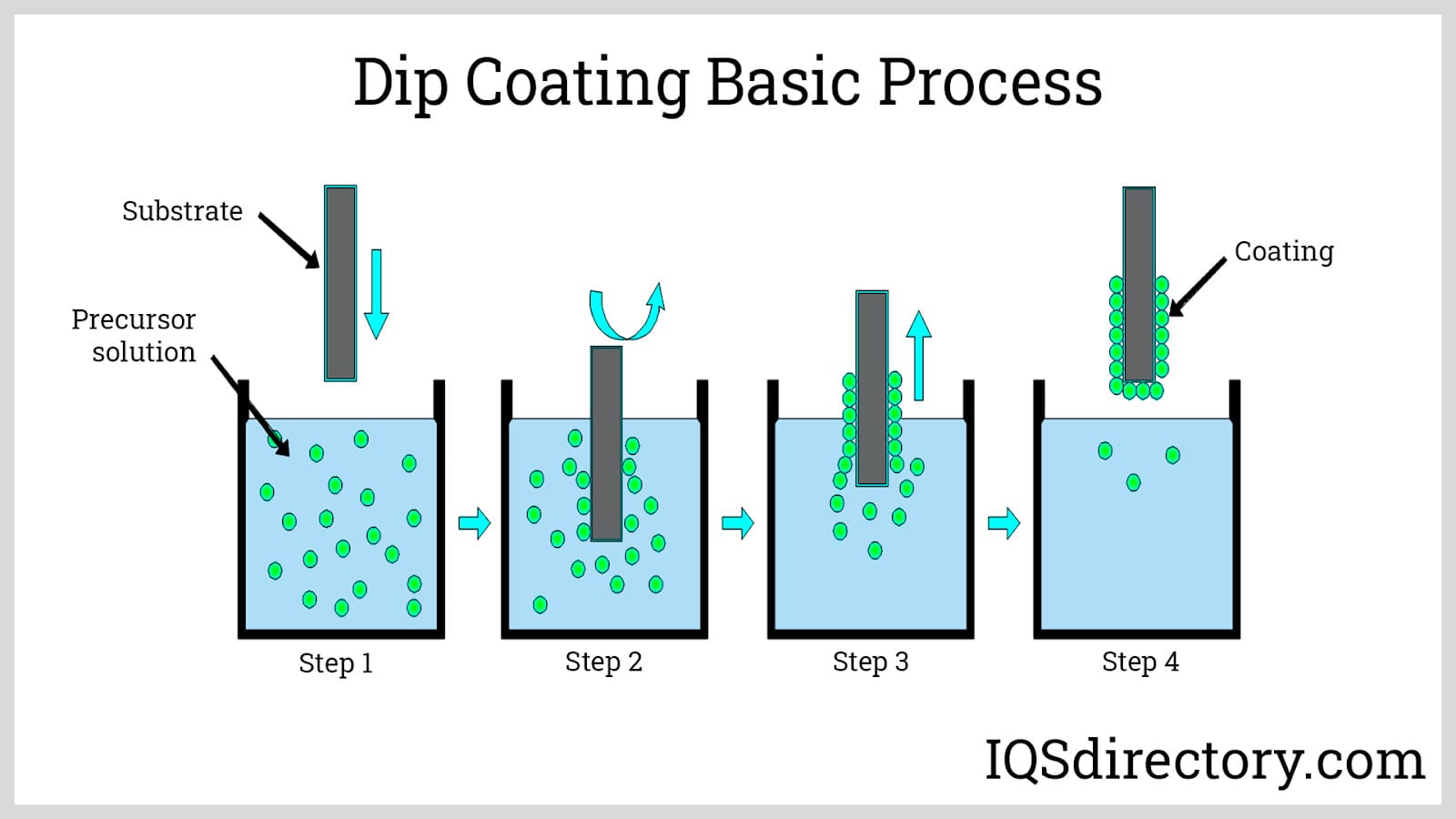
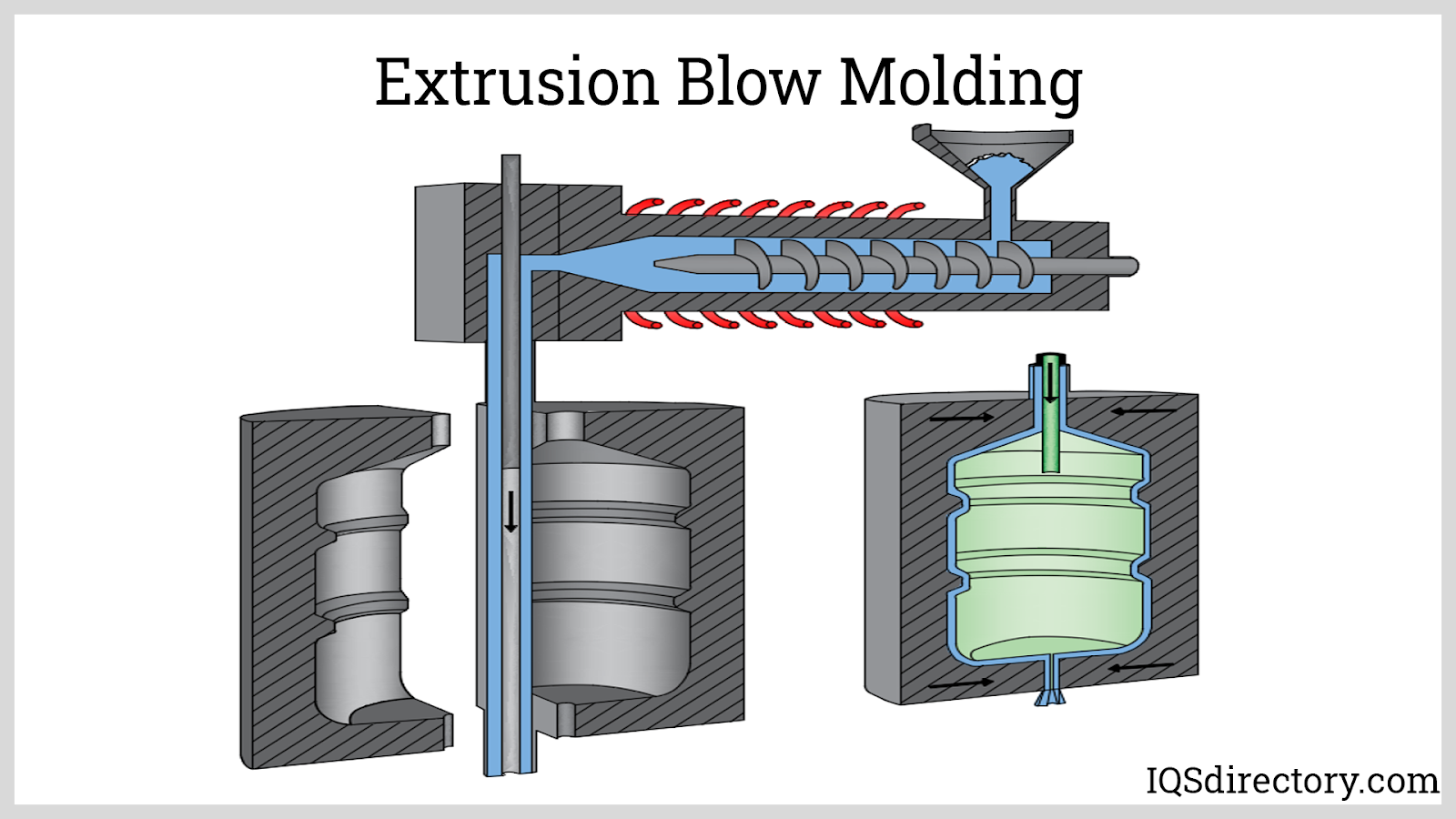
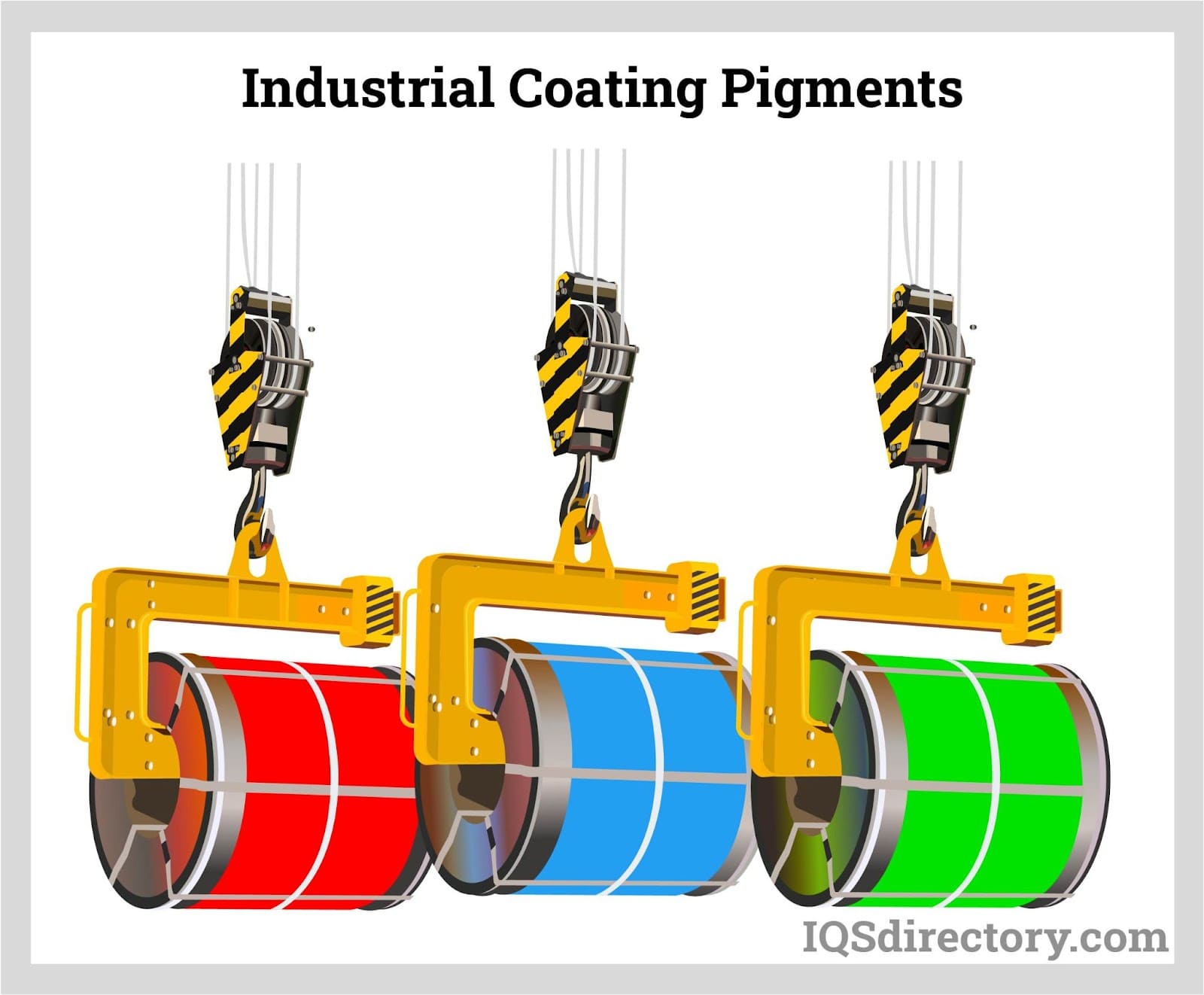

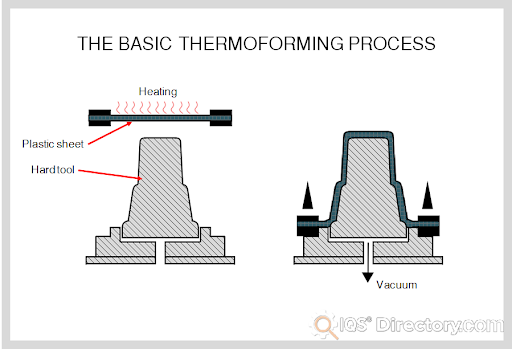
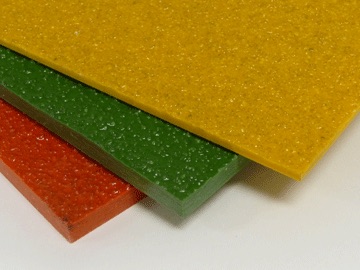 Fiberglass Fabricators
Fiberglass Fabricators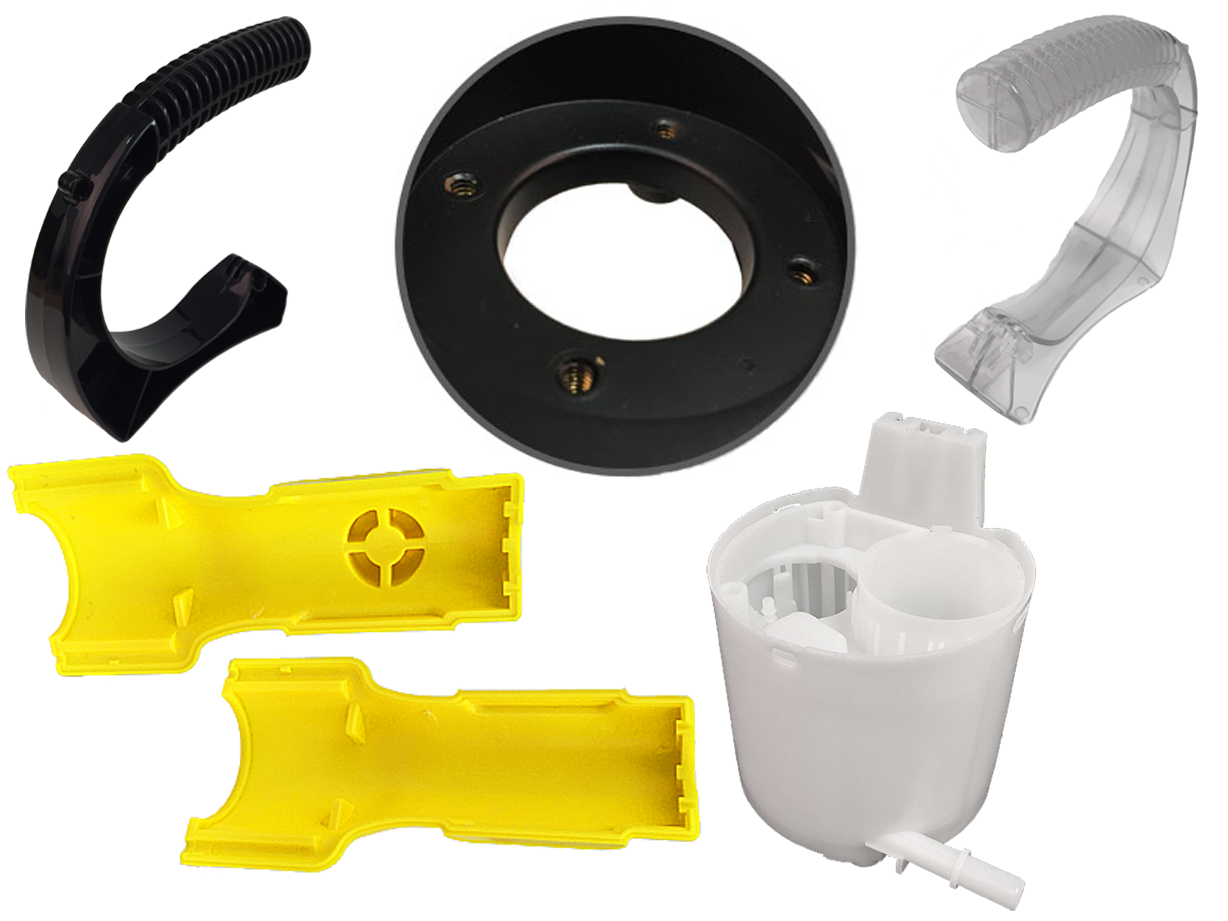 Injection Molded Plastics
Injection Molded Plastics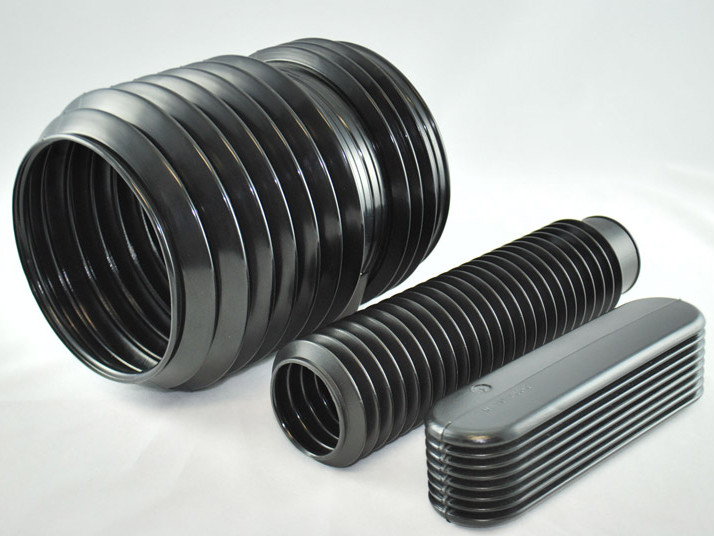 Plastic Blow Molding
Plastic Blow Molding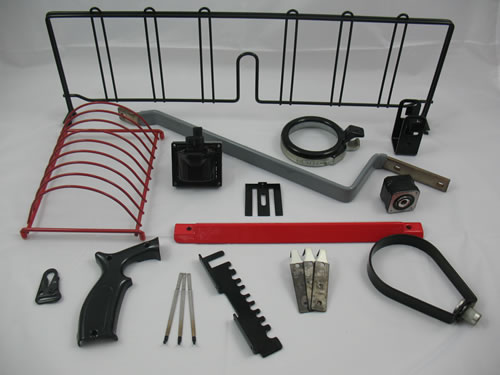 Plastic Dip Molding
Plastic Dip Molding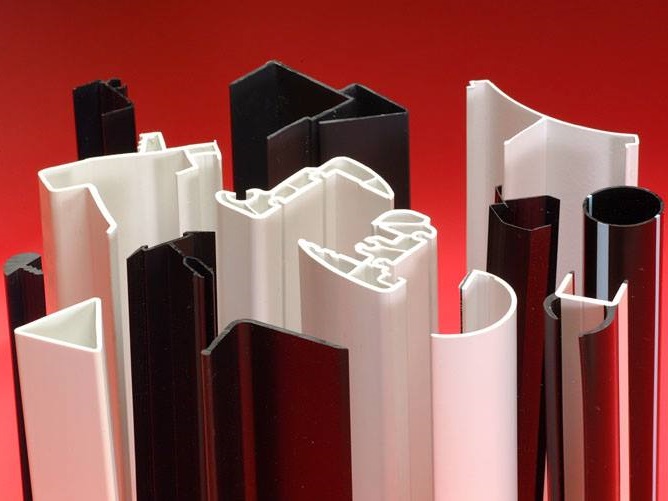 Plastic Extrusions
Plastic Extrusions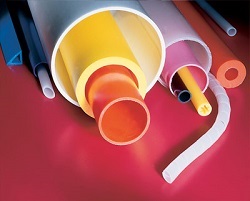 Plastic Tubing
Plastic Tubing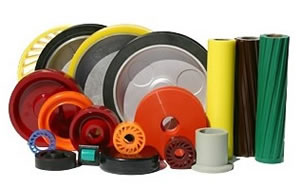 Polyurethane Molding
Polyurethane Molding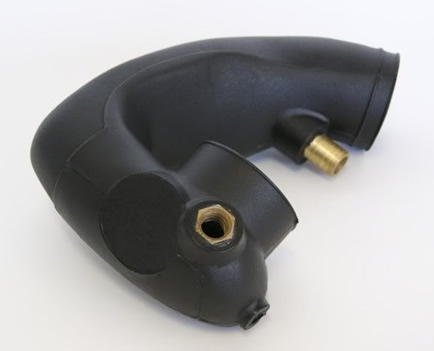 Rotational Molding
Rotational Molding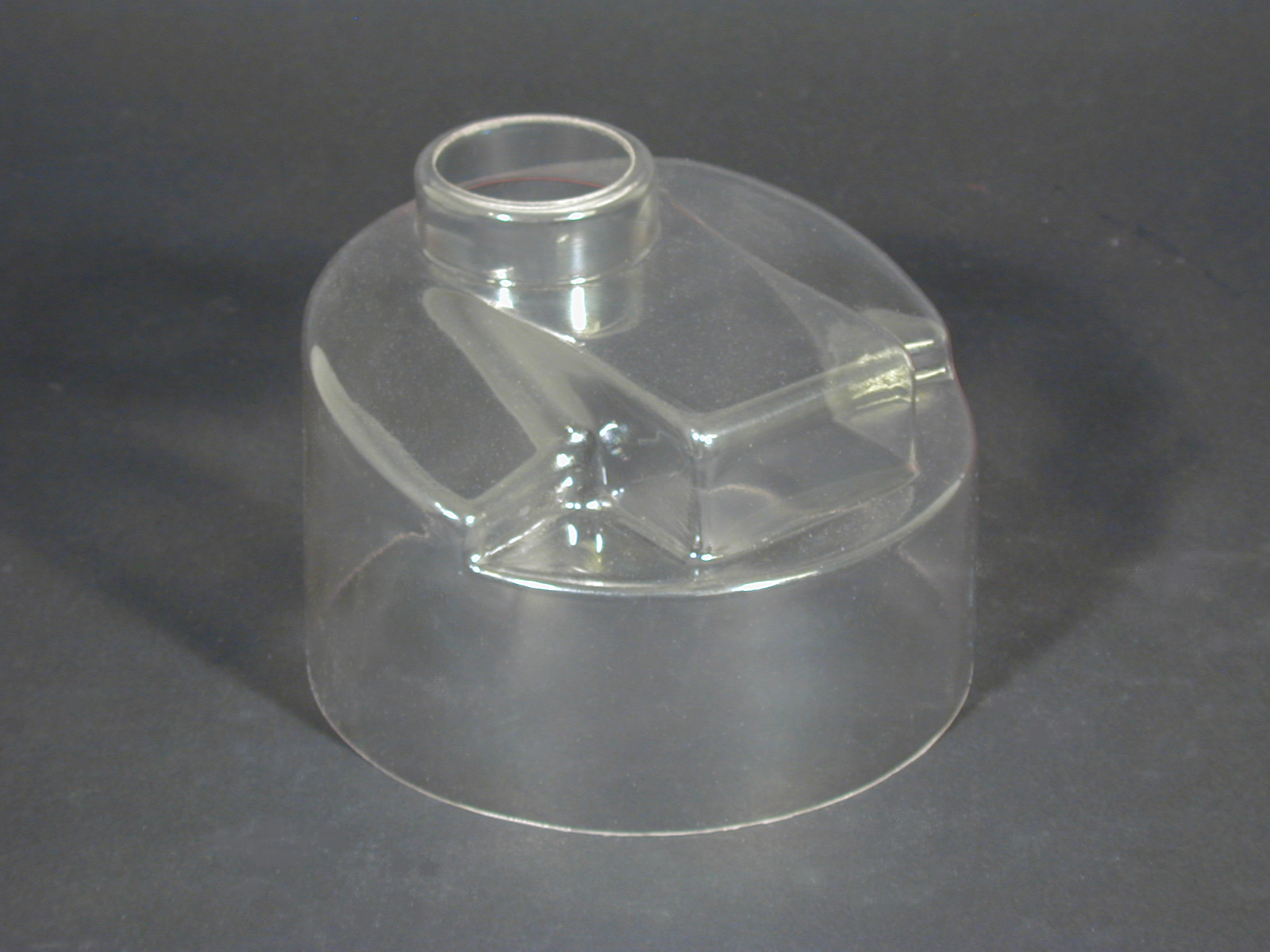 Vacuum Forming
Vacuum Forming Castings & Forgings
Castings & Forgings Bulk Material Handling
Bulk Material Handling Electrical & Electronic Components
Electrical & Electronic Components Flow Instrumentation
Flow Instrumentation Hardware
Hardware Material Handling Equipment
Material Handling Equipment Metal Cutting Services
Metal Cutting Services Metal Forming Services
Metal Forming Services Metal Suppliers
Metal Suppliers Motion Control Products
Motion Control Products Plant & Facility Equipment
Plant & Facility Equipment Plant & Facility Supplies
Plant & Facility Supplies Plastic Molding Processes
Plastic Molding Processes Pumps & Valves
Pumps & Valves Recycling Equipment
Recycling Equipment Rubber Products & Services
Rubber Products & Services